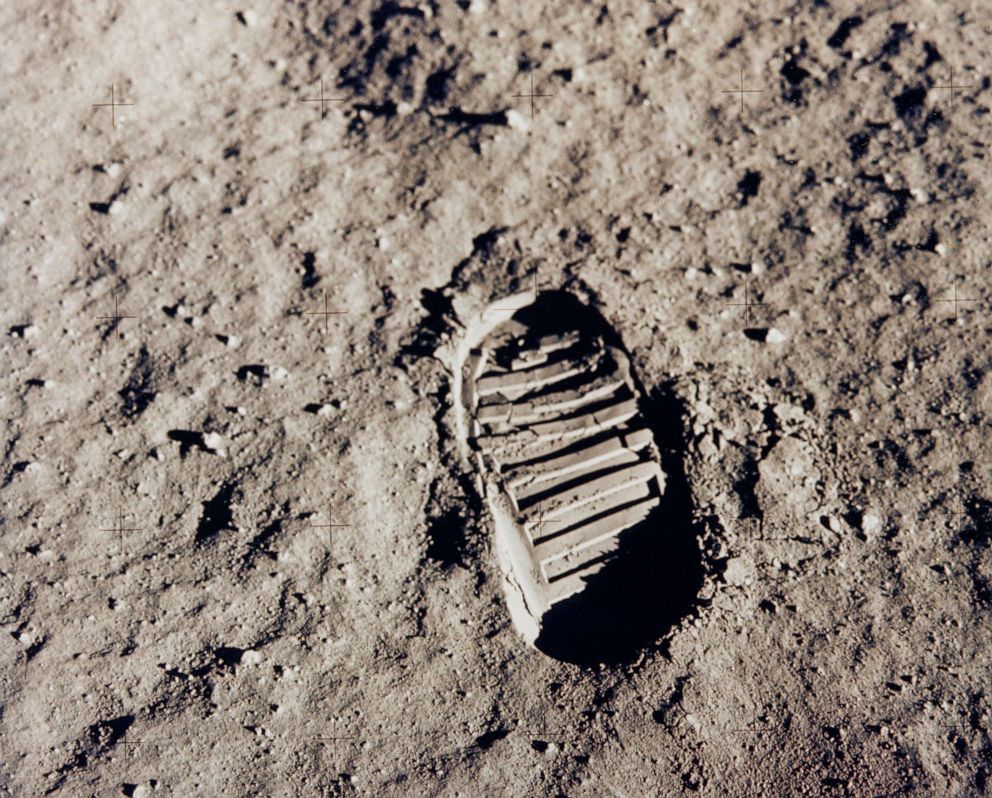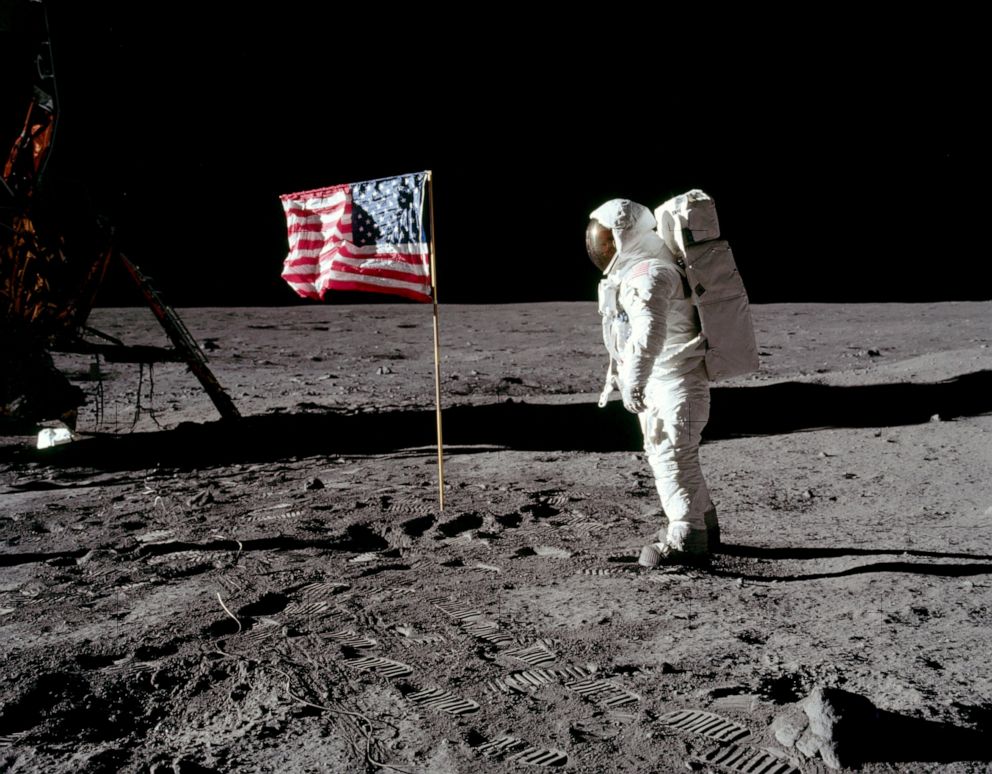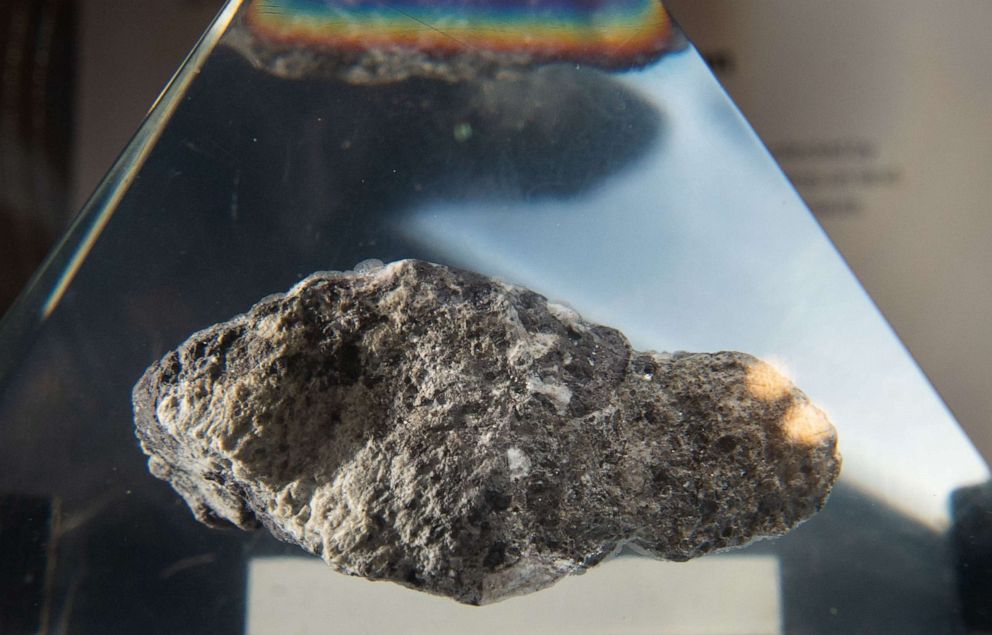Why the Apollo 11 moon landing conspiracy theories have endured despite being debunked numerous times
Some reportedly believe Stanley Kubrick filmed the landing at Area 51.
Sure, you could believe what people tell you.
Or you could believe that the moon landing was all a stunt pulled off by famous director Stanley Kubrick, who created technology that helped it look like man was pioneering space, according to some conspiracy theorists, who said it was really filmed in Area 51 in Nevada.
The fact that there were no stars in the background of pictures of the moon landing supports theories, in the minds of some, that it never really happened.
And so does the flag -- it looks like it's flapping in the wind! To some, that was clearly an oversight made by Hollywood producers who forgot there wouldn't be any wind blowing on the lunar surface.
Despite all scientific evidence debunking the aforementioned suggestions, various conspiracy theories about the moon landing have lingered for five decades, even before the dark underbelly of the internet became home to so many similarly false ideas.

NASA has tried its best to tamp down on moon-landing conspiracy theories through the years. The organization's efforts, much like the theories themselves, didn't start immediately after Apollo 11 landed on the moon in 1969.
"There was basically no prominent belief, or widespread belief … in the moon landing conspiracy theory until the late 1970s," said Jack Singal, a University of Richmond physics professor who discusses conspiracy theories in his science classes.
Singal pointed to the book "We Never Went to the Moon," which was self-published in 1974 by Bill Kaysing, a former engineer who's since died.
"That was the first kind of salvo in this, and it was very gradual in comparison, again, to other prominent conspiracy theories," Singal said.
Speculation about the moon landing in the late 1970s came at a time when trust in government was starting to dip.

Trust in government was at a peak of 77% in October 1964, according to Pew Research, which has been studying the public's trust in government since 1958.
That high figure was reported a year after President John F. Kennedy's assassination -- itself the subject of several conspiracy theories.
In October 1968, the year before the moon landing, average public trust in government dipped to 62%, and the year after the landing, in December 1970, it decreased further to 54%.
The public's trust decreased steadily until 1980, reaching a then-low of 27%. By comparison, public trust in government as of March 2019 was just 17%.
NASA made an effort to beat back the growing conspiracy theories by releasing a fact sheet in June 1977 titled "Did U.S. Astronauts Really Land on the Moon?" The first line of the release answered it succinctly: "Yes. Astronauts did land on the Moon."
The two-page memo specifically cites Kaysing's book before going on to refute its claims that the Defense Intelligence Agency set up a fake set to stage the landing in Nevada.
"From time to time we are asked the question above as a result of at least one book and recurring articles in various publications based either on its content or individuals' expressions of their opinions. Apart from the fact that millions of people saw the Apollo series on television and heard them on radio in real time, perhaps the lunar material is as irrefutable proof as any that the Moon missions were not 'faked,'" the NASA release states. Lunar material refers to any rocks taken from the moon.
NASA re-issued the same statement in February 2001, showing the longevity of the conspiracy theories.
Sean Potter, a NASA media relations specialist, responded to ABC News' inquiry by running through another list of evidence disputing conspiracy claims.
"When people question or have questions about the Apollo landings, we invite them to examine the evidence for themselves: 842 pounds of astronaut-collected Moon rocks studied by scientists worldwide for decades. You can still bounce Earth-based lasers off the retro-reflector mirrors placed on the lunar surface by the Apollo astronauts. NASA's Lunar Reconnaissance Orbiter imaged the landing sites in 2011. An estimated 400,000-plus people worked on the Moon landings, meaning a lot of eyes were watching this take place from inside the NASA community, and all the Apollo missions were independently tracked by the United States' chief adversary during the Cold War, the Soviet Union, who would not have sent NASA a letter of congratulations if the landings never happened," Potter told ABC News.

"Despite all this evidence, when conspiracy theorists still doubt the authenticity of the Moon landings, they probably also should ask why they question the landings in the first place," Potter said.
Singal said that the overarching conspiracy theory that the moon landing didn't happen "is an atypical one, for the reason that most conspiracy theories provide an explanation for a tragic event or some sort of randomness in the world."
The Sept. 11 attacks and the assassination of JFK are some of the clearest examples of so-called typical conspiracy theory-generating events, Singal said, noting that in those cases, conspiracy theories "provide an alternate explanation for what is a scary and tragic event and they attribute the scary and tragic event not to the perpetrators but to a sort of larger and more shadowy force."
He suggested that as it wasn't a tragedy, true moon landing conspiracy theorists are likely deeper into their theories instead of just passing inquisitors.
"My speculation," Singal said, "is that the moon landing is not a gateway conspiracy theory in the sense that it's probably not the first conspiracy theory that enthusiasts embrace."




